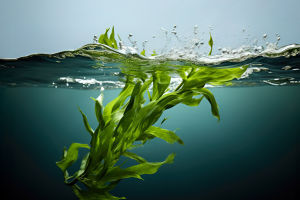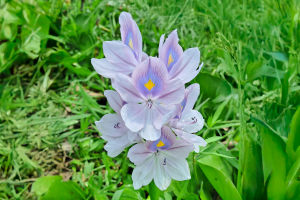The Threat of Wildfires
Imagine you're living in an area prone to wildfires. The haze fills the air, the heat is intense, and the dry vegetation is just waiting to catch flame. It's a situation that unfortunately plays out in many regions around the world.
While we can't stop wildfires entirely, nature has developed its own defense mechanism. Some plants have evolved fire-resistant traits that allow them to survive in fire-prone areas. These plants not only survive but can help restore ecosystems after a fire. Curious about how they do it? Let's explore the fascinating world of fire-resistant plants.
1. What Makes a Plant Fire-Resistant?
Before we dive into specific plants, it's essential to understand what makes a plant fire-resistant. Plants that are fire-resistant have developed a combination of physical and chemical traits that help them withstand flames. Some of these adaptations include:
• Water Content: Plants with high moisture content are less likely to catch fire. These plants absorb water during the wet season, which helps keep them hydrated and more resistant to fire.
• Thick, Wax-Coated Leaves: Many fire-resistant plants have thick, waxy coatings on their leaves, which act as a barrier to heat and flames. This coating slows down the process of combustion.
• Fire-Resistant Bark: Some plants, particularly trees, have bark that can resist heat and fire. This bark acts as insulation, protecting the inner wood and tissues from being burned.
• Low Flammability: Certain plants have leaves or branches that are naturally less flammable, even if they dry out. These plants can survive the heat of a fire without igniting easily.
By combining these adaptations, fire-resistant plants not only endure wildfires but can help stabilize the environment afterward.
2. Plants That Can Survive Wildfires
Now, let's look at some of the most fire-resistant plants that are well-suited for fire-prone areas.
• Manzanita (Arctostaphylos): Manzanita is a hardy shrub native to North America and is known for its thick, waxy leaves and fire-resistant bark. The plant's leaves are covered with a dense coating of wax, which helps reduce the chances of ignition. Manzanita can even sprout from its roots after being burned, making it a resilient plant in fire-prone areas.
• Coast Redwood (Sequoia sempervirens): These towering giants are equipped with thick bark that can withstand high temperatures. The coast redwood's bark acts as insulation, protecting its vascular system from fire damage. Even in the event of a wildfire, the redwood can often survive, and new growth will sprout from the roots.
• Banksia (Banksia spp.): Found in Australia, Banksias have evolved to withstand fire through several mechanisms. Their capsules seed pods are designed to open only after being exposed to heat, releasing seeds that will germinate in the post-fire environment. This adaptation ensures the plant's survival and helps regenerate the ecosystem after a fire.
• Yucca (Yucca spp.): Known for its thick, fleshy leaves, Yucca plants store water and can withstand the intense heat of wildfires. The plant's tough, leathery leaves are difficult to ignite, making them a good option for fire-prone areas. After a fire, Yuccas are able to regrow from their roots.
3. How These Plants Contribute to Fire-Prone Ecosystems
Fire-resistant plants play a crucial role in fire-prone ecosystems. In addition to surviving the fire, they help rebuild the environment afterward. Here's how:
• Erosion Control: After a fire, the ground is often left bare and vulnerable to erosion. Plants like Manzanita have deep, strong root systems that help hold the soil in place, preventing erosion and helping the land recover.
• Restoring Biodiversity: Some fire-resistant plants, such as Banksias, release seeds that can only germinate in the heat of a fire. This process not only ensures the plant's survival but also promotes biodiversity by encouraging new growth in a landscape that was otherwise destroyed by fire.
• Creating Firebreaks: Fire-resistant plants can act as natural firebreaks. Their ability to survive fires means they can help prevent fires from spreading, especially in areas where wildfires are common. Their moisture-rich, non-flammable leaves and thick bark create a barrier that can slow down the spread of fire.
4. Practical Tips for Using Fire-Resistant Plants in Landscaping
If you live in a fire-prone area and are thinking about incorporating fire-resistant plants into your garden or landscape, here are some practical tips:
1. Mix Fire-Resistant and Fire-Resilient Plants: While fire-resistant plants can survive flames, fire-resilient plants can survive heat and regrow afterward. Creating a balance between the two will provide both protection and restoration after a fire.
2. Strategically Place Plants: Place fire-resistant plants in areas that are more vulnerable to wildfires, such as near structures or along property lines. Using plants like yuccas or manzanitas can create a buffer zone that helps protect your home.
3. Keep Plants Well-Maintained: For fire-resistant plants to truly thrive, they need to be well-maintained. Prune dead branches, remove any dry foliage, and keep your plants healthy so they're better equipped to withstand a fire.
4. Incorporate Mulch and Gravel: Using non-flammable materials like gravel or stone mulch around your fire-resistant plants can further reduce the risk of fire. These materials act as firebreaks and prevent flames from reaching the plants.
5. The Future of Fire-Resistant Plants
As climate change continues to affect weather patterns, wildfires are becoming more frequent and intense. Researchers are looking into new ways to enhance fire-resistant traits in plants, whether through selective breeding or genetic modification. In the future, we may see even more plants that are better suited to survive in fire-prone areas, helping to protect both natural ecosystems and human communities.
6. Conclusion: Nature's Firefighters
Fire-resistant plants are nature's way of adapting to a fire-prone world. Their ability to withstand the heat, protect ecosystems, and regenerate after a fire makes them invaluable assets to our environment. Whether you're looking to restore a landscape after a fire or just want to add a layer of protection to your property, these plants offer a beautiful and practical solution.
Next time you walk through a fire-prone area or plan your own landscaping project, consider planting some fire-resistant varieties. Not only will they thrive in tough conditions, but they'll also contribute to the resilience of the ecosystem, proving that nature's solutions are often the most effective ones.


